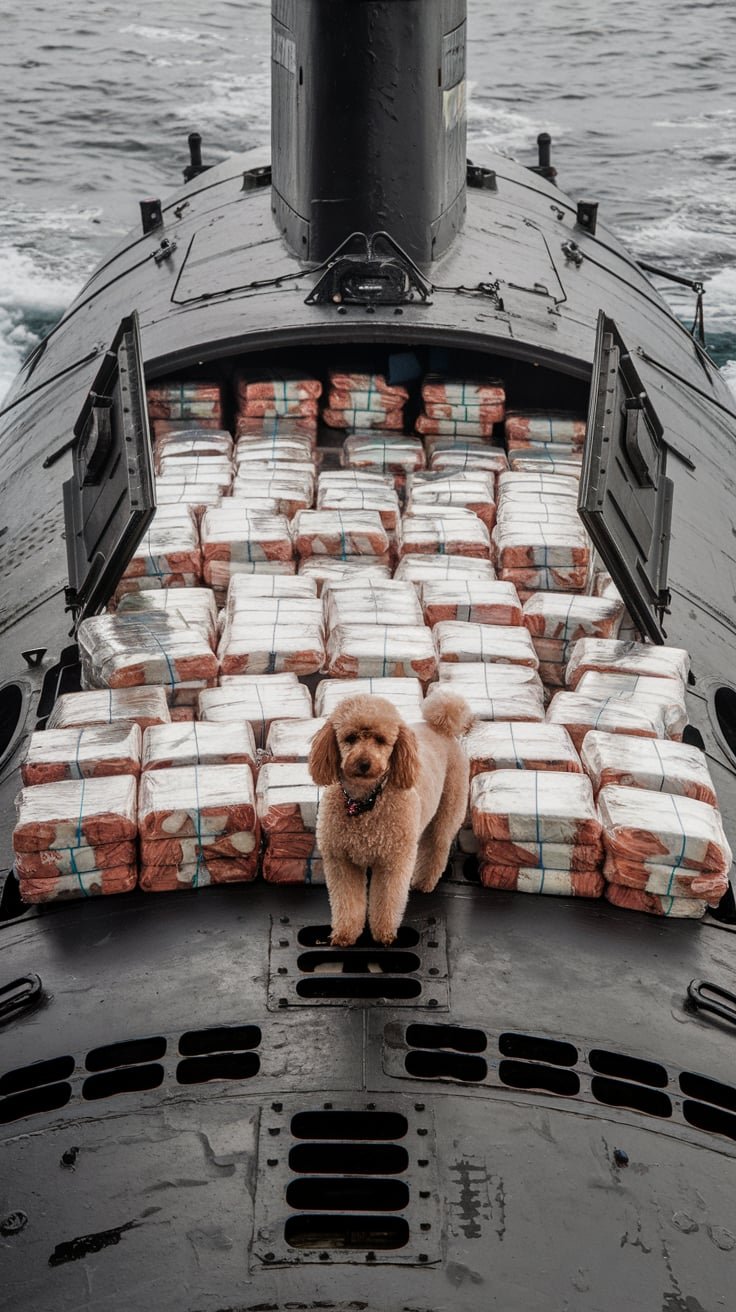FLOSSI NABS NARCO-SUBMARINE
British police assisted in capturing a submarine transporting 6.5 tonnes of cocaine to Europe, marking one of the largest drug busts of its kind.
The vessel had departed from Brazil when it was captured by Portuguese police in the Atlantic Ocean, 500 nautical miles south of the Azores Islands.
Five crew members from Brazil, Colombia, and Spain were arrested and transferred to the Portuguese island of São Miguel.
Officials stated that the submarine contained £530 million worth of cocaine. A Portuguese newspaper reported that it was one of the largest semi-submersibles ever built to transport the drug from South America to Europe.
“The traffickers planned to collect the drugs near the coast using high-speed vessels and smuggle them ashore,” stated Spain’s Guardia Civil.
Spanish authorities, who alerted the Portuguese, noted it was the first time a drug-running semi-submersible had been intercepted in the open sea.
“The transatlantic movement of semi-submersibles is increasingly frequent, with several cases in recent years,” Spain’s Guardia Civil said. “These types of vessels are difficult to detect and often carry a large amount of cocaine… the crew can easily sink them if caught, making it more difficult to recover the drugs as evidence of the crime.”
Europe is the largest cocaine market after the US, with hundreds of homemade submarines being launched to the continent since the practice began two decades ago.
In 2019, the discovery of a submarine carrying 3.3 tonnes of cocaine off the coast of Spain was described by police as the first “narco-submarine” to be intercepted in Europe.
The latest bust, dubbed Operation Nautilus, also involved the Portuguese Air Force, the UK’s National Crime Agency, the US Drug Enforcement Administration and the Lisbon-based Maritime Analysis and Operations Centre, of which Britain is a part.
Cocaine was widely used in the late 1800s and early 1900s — even included in products like Coca-Cola and various over-the-counter tonics. It was also used in medical settings, especially as a local anaesthetic.
Cocaine was used mainly by doctors and pharmacists or included in patent medicines. The general public didn't have easy or cheap access to large, pure amounts of cocaine like people might later in the 1970s–80s during the crack cocaine epidemic.
The cocaine content in products like early Coca-Cola or tonics was often minimal. It wasn’t enough to cause rapid dependence or widespread addiction in the way pure or concentrated forms of cocaine can.
Cocaine’s legal heyday was relatively brief. By 1914, the Harrison Narcotics Tax Act heavily restricted cocaine and opiate use.
In the 1880s, doctors discovered that cocaine could numb the surface of the eye without affecting its function — a huge breakthrough.
In 1884, Viennese ophthalmologist Karl Koller famously used a cocaine solution to perform eye surgery without general anaesthesia.
This allowed for precise operations and was much safer than previous methods, often involving ether, chloroform, or nothing.
Cocaine became standard in eye surgeries for a time — not just to numb the eye, but to reduce bleeding and irritation.
Sigmund Freud was a big proponent of cocaine’s medical uses, including for mood elevation and nerve disorders. But Karl Koller, Freud’s colleague, applied it to ophthalmology and changed surgery forever.





